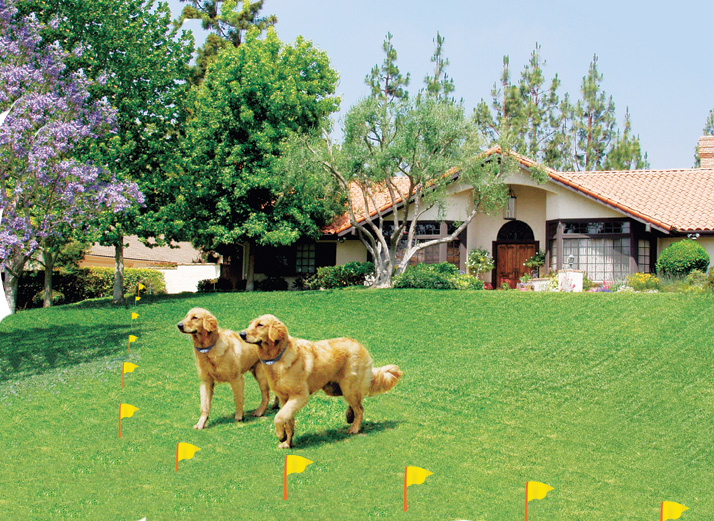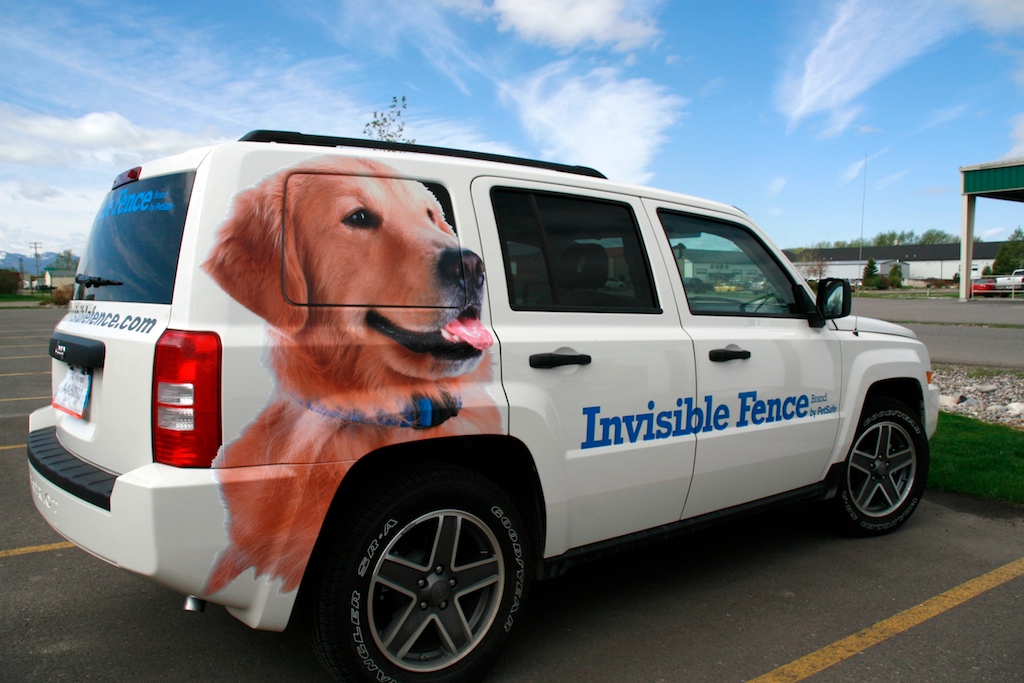Invisible Fence
An invisible
fence is an electronically generated 3-dimensional boundary that may take
any geometrical shape to enclose an area, as well as surround individual
animals, but is unseen by the eye. Invisible fences control animals that are
wearing radio frequency (RF) receiving devices capable of capturing
electronic signals. The majority of signals used in invisible fences are
between 3,000 hertz and 300 gigahertz. Invisible fences use sensory cues to
invoke a change in an animal’s behavior or movement. Large animals can be
controlled using audio cues, such as whistles, beeps, the human voice or any
combination of them. Electric shock is also a cue used to control
animal movement. Most commercial invisible fencing devices contain RF receivers
that contain safety features aimed at preventing inhumane cuing, thus promoting
an optimal animal experience. High frequency RF signals are emitted
from a ground-based transmitter; however many invisible fencing systems will
require many transmitters when the containment terrain is rugged and uneven.
The first
commercial invisible fencing system was designed to contain house pets within a
predetermined area, which was patented by Richard Peck, owner of Invisible
Fence Company in 1974. Peck’s invisible fence was also the first borderless
containment system used to contain livestock. In 1987 Peck successfully
contained domestic goats to a limited area using RF receiving collars
intended for household dogs. In 1989 Thomas M. Quigley of Tri-Tronics
successfully trained cattle to avoid specific areas, with less than two days of
training using dog training collars. In 1990 Tri-Tronics successfully developed
a RF receiver specifically designed for livestock to
control heifers in Canadian fields and pens. In 1991 Brian Rose invented a RF
receiver that controlled cattle with an electric shock that was delivered
through a nose clip. In 1992 AgriTech Electronics developed an electronic ear
tag which used audio and shock cues to control cattle and was
researched to be 90% effective in preventing Texas steers and heifers from
entering an exclusion zone.
















No comments:
Post a Comment